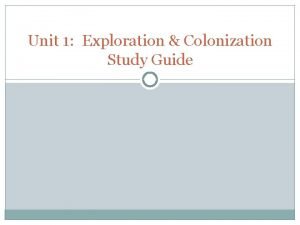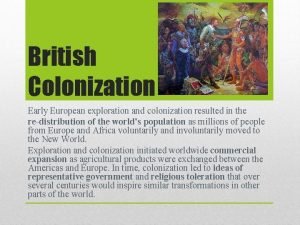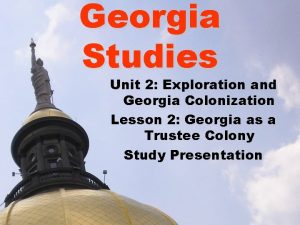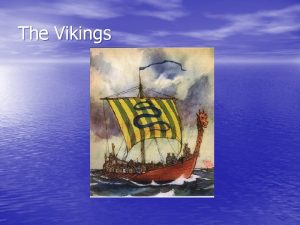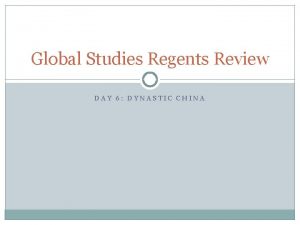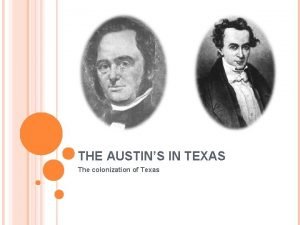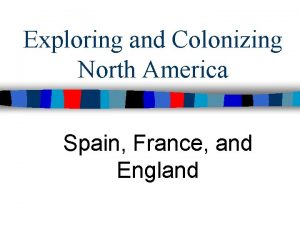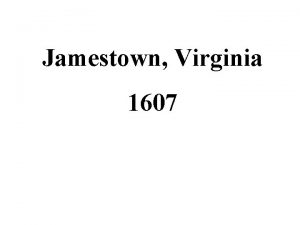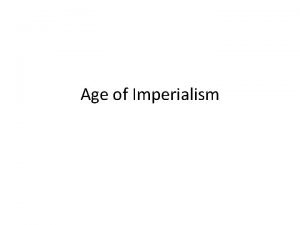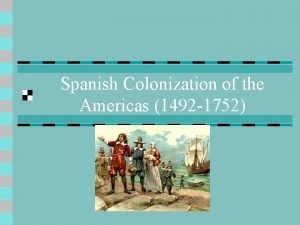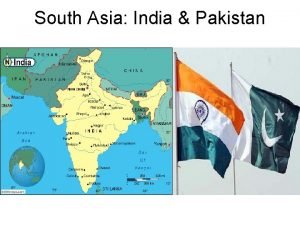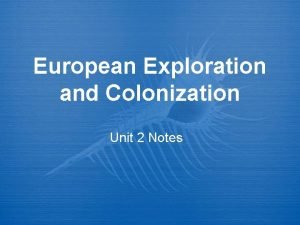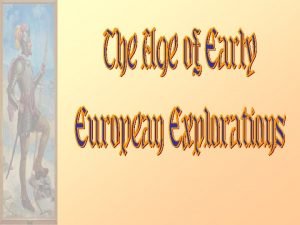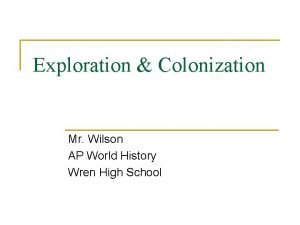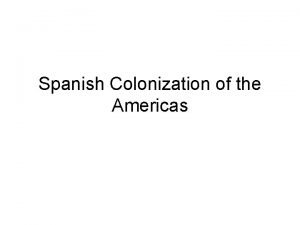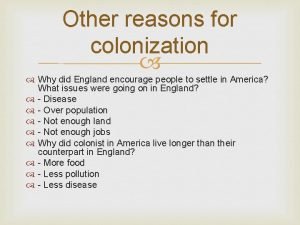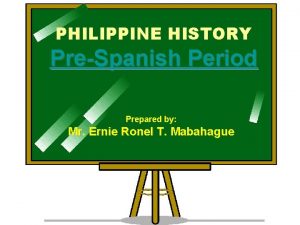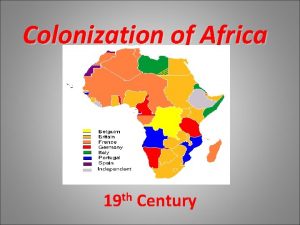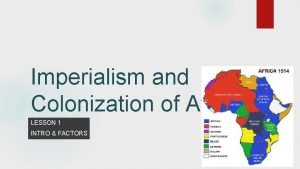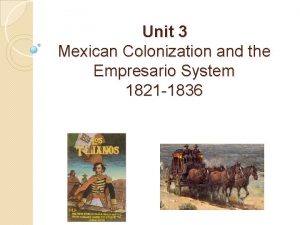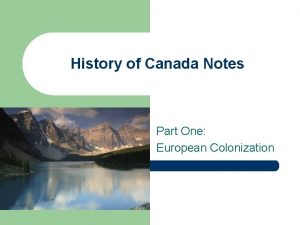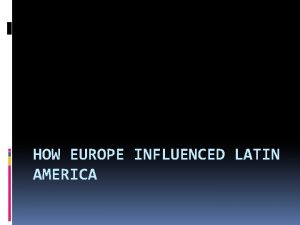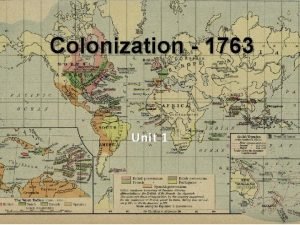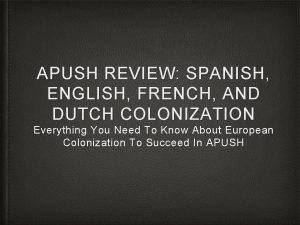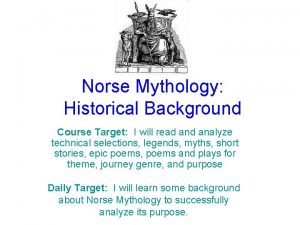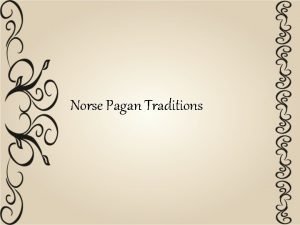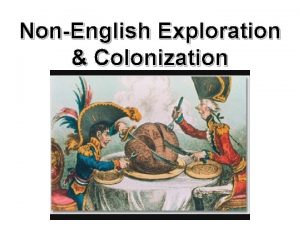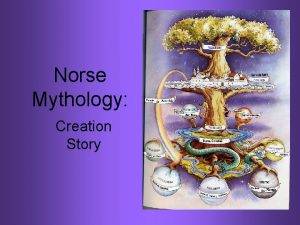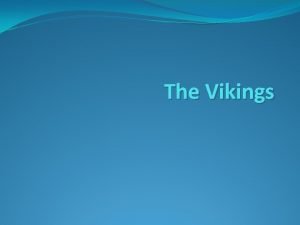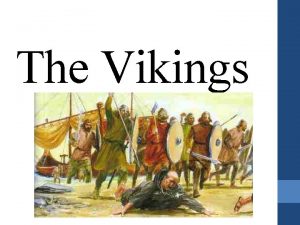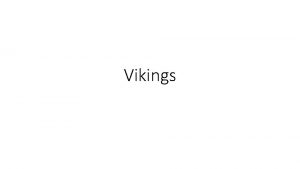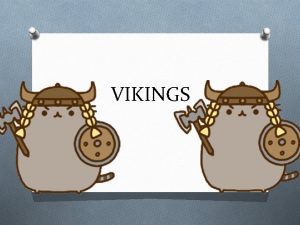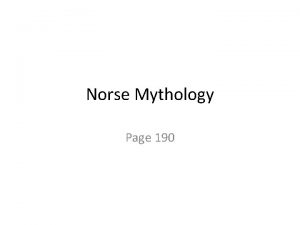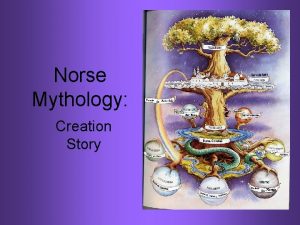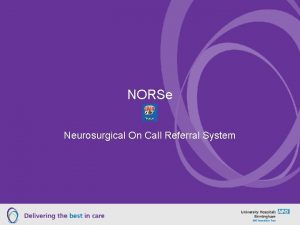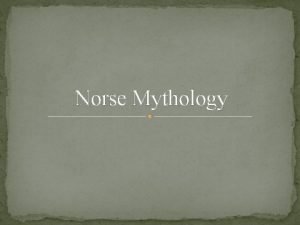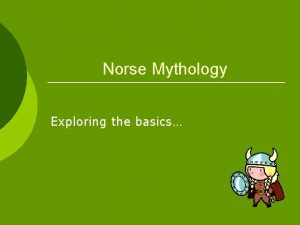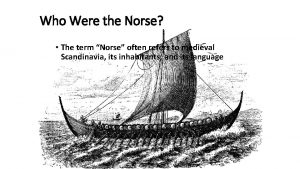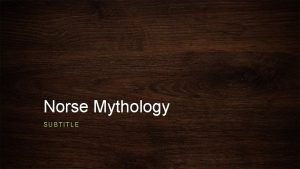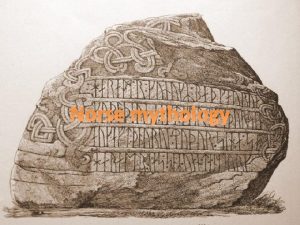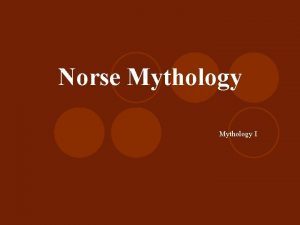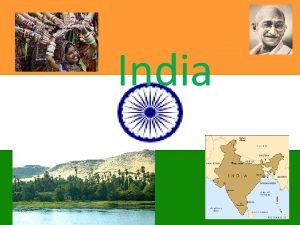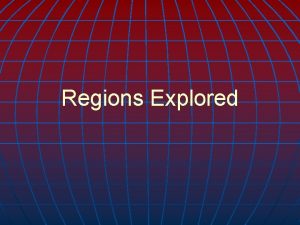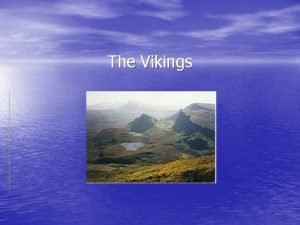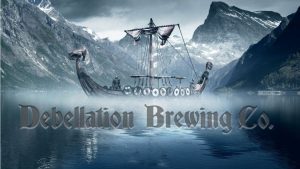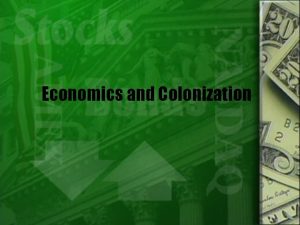NonEnglish Exploration Colonization Norse The Vikings Explored parts

































- Slides: 33

Non-English Exploration & Colonization

Norse: The Vikings • Explored parts of North America from colonies in Iceland • Eric the Red: Colonized Greenland • Eric’s son, Leif Ericsson, sailed west and found North America in 1000 AD, giving it three names:

Helluland – “Land of Flat Stones” – now called Baffin Island Markland – “Land of Trees” – now called Labrad Vinland – “Land of Meadows” – now called Newfoundland

• The Vikings stayed for 15 years, and then left – Probably due to distance and poor relations with native peoples • A Viking settlement was found in the 1960 s at L’anse aux Meadows, Newfoundland

Why is this important? • The Vikings were the first Europeans that we know settled in America • The Vikings wrote about these adventures in the Icelandic sagas, which were read by Christopher Columbus in Iceland in 1477

Portugal • Prince Henry the Navigator starts school for sailors, starts exploration around Africa • Bartholomew Diaz: Find Cape of Good Hope in 1486 • Vasco da Gama: Arrives in India in 1498 • Pedro Cabral: Claims Brazil

Born in Genoa of humble parents, Christopher Columbus grew up to be an experienced seafarer, venturing as far as Iceland West Africa. His adventures convinced him the world must be round and that the fabled riches of the East- spices and gold- could be had by sailing west, superseding the overland routes, which the Turks had closed off to commerce. To get funding for his enterprise, he beseeched monarch after monarch in Western Europe. After at first being dismissed by Ferdinand Isabella of Spain, Columbus finally got his chance when Isabella decided to underwrite a modest expedition. Columbus outfitted three pitifully small ships, the Nina, Pinta, and Santa Maria, and set forth from Spain. After an arduous journey of more than two months, during which his mutinous crew almost threw him overboard, Columbus discovered the West Indies on October 12, 1492. Unfortunately although he made three more voyages to America, he never knew he had discovered a New World. Columbus died in obscurity, unappreciated and penniless. Yet, without his daring American History

Born in Genoa of humble parents, Christopher Columbus grew up to be an experienced seafarer, venturing as far as Iceland West Africa. His adventures convinced him the world must be round and that the fabled riches of the East- spices and gold- could be had by sailing west, superseding the overland routes, which the Turks had closed off to commerce. To get funding for his enterprise, he beseeched monarch after monarch in Western Europe. After at first being dismissed by Ferdinand Isabella of Spain, Columbus finally got his chance when Isabella decided to underwrite a modest expedition. Columbus outfitted three pitifully small ships, the Nina, Pinta, and Santa Maria, and set forth from Spain. After an arduous journey of more than two months, during which his mutinous crew almost threw him overboard, Columbus discovered the West Indies on October 12, 1492. Unfortunately although he made three more voyages to America, he never knew he had discovered a New World. Columbus died in obscurity, unappreciated and penniless. Yet, without his daring American History

Santa Maria Length: 62 feet Beam: 18 feet Draft: 10 feet

62 ft 50 ft 56 ft




Christopher Columbus • 1492: Christopher Columbus, on behalf o Queen Isabella and King Ferdinand of Spain, sails west to try to find a route to Asia by sailing west across the Atlantic. • Columbus lands in the Bahamas on October 12, thinks he’s near India, and claims all the land for Spain. • Over 4 voyages he explores most of the area around the Caribbean Sea.

Columbian Exchange

Juan Ponce de Leon • Looked for the “Fountain of Youth” in 1513, north of Cuba. • Discovered and named Florida R O D A T S I U Q N O C

Spanish America Hernando de Soto • Explored southeastern United States in 1539 -1542 • Brutally treated the local native population R O D A T S I U Q N O C

Spanish America Francisco Coronado • Looked for the fabled “City of Gold” (El Dorado, or Cibola) north of Mexico – found nothing • Explored southwestern United States in 1540 -1542 • Demanded natives convert to Christianity R O D A T S I U Q N O C

Vasco de Balboa • Named Pacific Ocean after crossing over Panama Amerigo Vespucci • May have made 4 voyages to America • “America” is named for him, by Martin Waldsemuller (Flemish mapmaker) • Allegedly realized America was not India R O D A T S I U Q N O C

Ferdinand Magellan • Circumnavigated the globe • Killed in the Philippines Hernando Cortez • Conquered the Aztec Empire in Mexico R O D A T S I U Q N O C

Francisco Pizarro • Conquered the Inca Empire in South America Juan Cabrillo • Explored the Pacific coast of California from 1542 -1543 R O D A T S I U Q N O C

• Treaty of Tordesillas (1494): Amending earlier agreements and declarations, the world is divided into Spanish and Portuguese halves. SPAIN PORTUGAL

• Encomienda System: land grants from the king that includes the right to demand labor and/or taxes from Indians if the Spanish taught them Catholicism and Spanish. • Asiento System: Selling of licenses for monopolies on trade goods in the Americas – often slaves

Valladolid Debate Bartolome de las Casas Juan Gines de Sepulveda

Laws of the Indies • Royal laws governing nearly all aspects of Spanish American life. • Included rules on foreign trade, town planning, and treatment of native populations (New Laws of 1542)

Pueblo: a town, with homes, a market, and churches surrounding a plaza. Usually built to compliment a presidio or mission

Presidio: A fort with Spanish soldiers (garrison). Usually located on the frontier to control the Indians.

Mission: A religious settlement run by the Catholic Church, to Christianize the Indians and spread Catholic Spanish culture. -21 built in California by Father Junipero Serra.

Spanish Social Classes Peninsulare: Born in Spain. They can hold government jobs, and usually have lots of land money. Creole: Spanish parents, but born in America. Could be rich, but couldn’t hold government jobs. Mestizo: The working class. Had parents of both Spanish and Indian descent. Mulatto: Mixed Spanish and African descent Indians Zambo: Mixed Indian and African descent African Slaves

The Black Legend An image of Spain circulated through late sixteenth-century Europe, borne by means of political and religious propaganda that blackened the characters of Spaniards and their ruler to such an extent that Spain became the symbol of all forces of repression, brutality, religious and political intolerance, and intellectual and artistic backwardness for the next four centuries. Spaniards. . . have termed this process and the image that resulted from it as ‘The Black Legend, ’ Spaniards who came to the new world seeking opportunities beyond the prospects of their European environment are contemptuously called cruel and greedy "goldseekers, " or other opprobrious epithets virtually synonymous with Devils; but Englishmen who sought New World opportunities are more respectfully called "colonists, " or "homebuilders, " or "seekers after liberty. “ When Spaniards expelled or punished religious dissidents that was called "bigotry, " “intolerance, " "fanaticism". . . When Englishmen, Dutchmen, or Frenchmen did the same thing, it is known as "unifying the nation, ". . . ” – Phillip Wayne Howell

Spanish America The Treasure Fleet • Every year, a fleet of galleons (a large Spanish sailing ship) sailed around the Caribbean, collecting gold, silver, gems, and other valuables for transport back to Spain


Spanish America
 Unit 1 exploration and colonization
Unit 1 exploration and colonization Early european exploration and colonization resulted in
Early european exploration and colonization resulted in Unit 2: exploration and georgia colonization
Unit 2: exploration and georgia colonization Age of the vikings
Age of the vikings The map shows that on his voyages, zheng he explored
The map shows that on his voyages, zheng he explored Modern dark romanticism
Modern dark romanticism Imperial colonization law
Imperial colonization law When did britain colonize america
When did britain colonize america Jamestown reason for colonization
Jamestown reason for colonization Between 1859 and 1893 vietnam
Between 1859 and 1893 vietnam Spanish colonization of the americas
Spanish colonization of the americas Asia colonization map
Asia colonization map Colonization defenition
Colonization defenition 3 g's spanish colonization
3 g's spanish colonization Cycle of conquest and colonization
Cycle of conquest and colonization Reasons for colonization in america
Reasons for colonization in america Wilson whap
Wilson whap Glory to god in spanish
Glory to god in spanish Reason for colonization
Reason for colonization Political system and governance before spanish colonization
Political system and governance before spanish colonization Colonization defenition
Colonization defenition Language in africa
Language in africa Colonization
Colonization The empresario system
The empresario system Who colonized canada
Who colonized canada Colonization of south america
Colonization of south america Space colonization
Space colonization Colonization
Colonization French colonization apush
French colonization apush Colonization acrostic poem
Colonization acrostic poem Norse mythology course
Norse mythology course Viking beliefs
Viking beliefs Santa mara length
Santa mara length Norse mythology creation story
Norse mythology creation story
